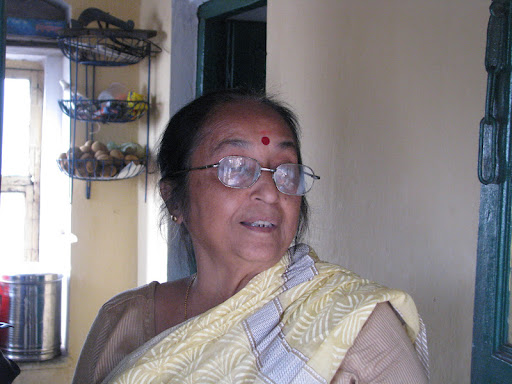Krishna P Mukherjee
from Manhasset, NY
Krishna Mukherjee Phones & Addresses
- Manhasset, NY
- 17 Dewey St, Manhasset, NY 11030 • 5166270139
Work
-
Company:Ubs ag2010
-
Position:Associate director
Education
-
School / High School:Indian Institute of Technology
-
Specialities:Bachelor of Technology (B.Tech) in Electronics and Electrical Communication Engineering
Resumes

Senior R&D Lead Engineer At Bloomberg L.p.
view sourceLocation:
Greater New York City Area
Industry:
Information Technology and Services

Senior Executive - Kwi
view sourceLocation:
83 Corsaire Ln, Schaumburg, IL 60173
Industry:
Information Technology And Services
Work:
Bloomberg L.P. since Feb 2006
Senior R&D Lead Engineer
Senior R&D Lead Engineer
Education:
Don Bosco School, Park Circus
Indian Institute of Technology, Kanpur
Masters, Master of Technology, Computer Science, Engineering University of Washington
New York University
Indian Institute of Technology
Masters Indian Institute of Technology
Masters, Master of Technology, Computer Science, Engineering, Computer Science and Engineering Don Bosco School, Calcutta
Indian Institute of Technology
Bachelors, Bachelor of Technology, Communication, Engineering, Electronics
Indian Institute of Technology, Kanpur
Masters, Master of Technology, Computer Science, Engineering University of Washington
New York University
Indian Institute of Technology
Masters Indian Institute of Technology
Masters, Master of Technology, Computer Science, Engineering, Computer Science and Engineering Don Bosco School, Calcutta
Indian Institute of Technology
Bachelors, Bachelor of Technology, Communication, Engineering, Electronics
Skills:
Agile Methodologies
Software Development
Sdlc
Software Project Management
Business Analysis
Enterprise Software
Databases
Business Intelligence
Cloud Computing
Management
Xml
Software Design
Software Engineering
Crm
Project Management
Microsoft Sql Server
Saas
Sql
Requirements Analysis
C#
Vendor Management
Software Development Life Cycle
Soa
Product Management
Integration
Leadership
Cross Functional Team Leadership
Analysis
System Architecture
Customer Relationship Management
.Net
.Net Framework
Software As A Service
Software Development
Sdlc
Software Project Management
Business Analysis
Enterprise Software
Databases
Business Intelligence
Cloud Computing
Management
Xml
Software Design
Software Engineering
Crm
Project Management
Microsoft Sql Server
Saas
Sql
Requirements Analysis
C#
Vendor Management
Software Development Life Cycle
Soa
Product Management
Integration
Leadership
Cross Functional Team Leadership
Analysis
System Architecture
Customer Relationship Management
.Net
.Net Framework
Software As A Service
Interests:
Traveling
Music
Literature
Music
Literature
Languages:
English
Bengali
Hindi
Bengali
Hindi
Certifications:
Certified Disciplined Agilist (Cda)

Krishna Mukherjee
view source
Krishna Mukherjee
view source
Krishna Mukherjee Manhasset, NY
view sourceWork:
UBS AG
2010 to 2000
Associate Director Bloomberg LP
New York, NY
2006 to 2010
Senior R&D Lead Engineer Citadel Investment Group
Chicago, IL
2004 to 2006
Senior Software Development Manager Wolters Kluwer
New York, NY
1996 to 2004
Senior IT Manager / CIO
2010 to 2000
Associate Director Bloomberg LP
New York, NY
2006 to 2010
Senior R&D Lead Engineer Citadel Investment Group
Chicago, IL
2004 to 2006
Senior Software Development Manager Wolters Kluwer
New York, NY
1996 to 2004
Senior IT Manager / CIO
Education:
Indian Institute of Technology
Bachelor of Technology (B.Tech) in Electronics and Electrical Communication Engineering Indian Institute of Technology
Master of Technology (M.Tech) in Computer Science and Engineering New York University
Professional Certifications in Information Technology
Bachelor of Technology (B.Tech) in Electronics and Electrical Communication Engineering Indian Institute of Technology
Master of Technology (M.Tech) in Computer Science and Engineering New York University
Professional Certifications in Information Technology
Isbn (Books And Publications)
-
Economics For Engineers
view source -
Author:Krishna Kumar Mukherjee
-
ISBN #:0210222646
Us Patents
-
Automated Forms Publishing System And Method Using A Rule-Based Expert System To Dynamically Generate A Graphical User Interface
view source -
US Patent:63144158, Nov 6, 2001
-
Filed:Nov 4, 1998
-
Appl. No.:9/185581
-
Inventors:Krishna C. Mukherjee - Flushing NY
-
Assignee:CCH Incorporated - Riverwoods IL
-
International Classification:G06F 1700
-
US Classification:706 47
-
Abstract:A system and method includes a rule-based expert system that uses high-level rules for determining what graphical interface features should be displayed to a user. The rules can be written in a language such as PROLOG and used in an inference engine to drive the graphical user interface. The rules can be changed without recoding and testing of computer software, and without specialized computer software knowledge. Consequently, people other than programmers can customize and change a graphical user interface easily and without errors. Certain embodiments include a scanner and related software that captures data fields from existing paper forms; a database for storing field definitions and their relationships together with rules for determining which user interface features to display at a particular point in a data entry sequence; an inference engine for executing the rules; a graphical user interface component that provides the user with dynamically generated screen configurations based on execution of the rules (which are fired based on inferences drawn from data the user has entered); and a printing component that generates paper and/or electronic forms based on the user's inputs and the execution of the rules. Other embodiments include a method for using a graphical user interface to dynamically represent information based on previous responses including steps of displaying a first set of information for which data selection is required; using the first set of information to fire rules in an inference engine, wherein the rules produce conclusions that are used to dynamically generate a second set of information for which data selection is required; storing the results of the first and second sets of information as predicates for further rules; and generating one or more forms using the first and second sets of information.
Googleplus

Krishna Mukherjee

Krishna Mukherjee

Krishna Mukherjee

Krishna Mukherjee

Krishna Mukherjee

Krishna Mukherjee

Krishna Mukherjee

Krishna Mukherjee
Myspace

Krishna Mukherjee
view source
Krishna Mukherjee
view source
Krishna Mukherjee
view source
Krishna C. Mukherjee
view source
Krishna Prasad Mukherjee
view source
Krishna Kanjilal Mukherjee
view source
Krishna Debnath Mukherjee
view source
Jiban Krishna Mukherjee
view sourceYoutube
Get Report for Krishna P Mukherjee from Manhasset, NY







